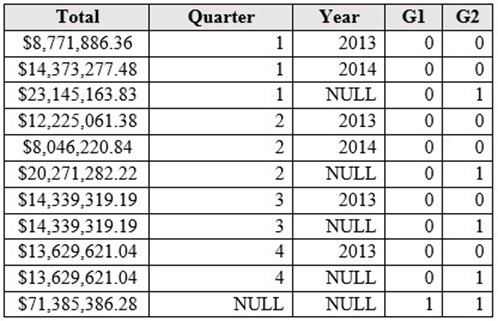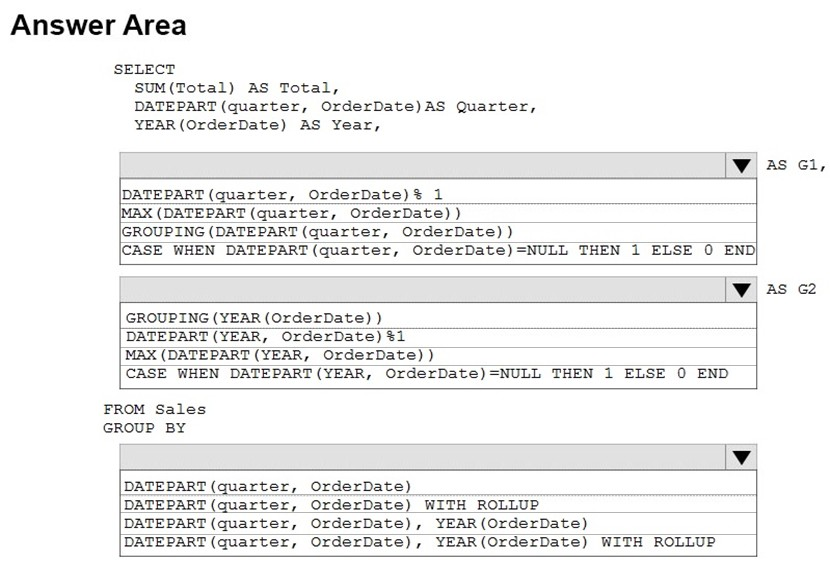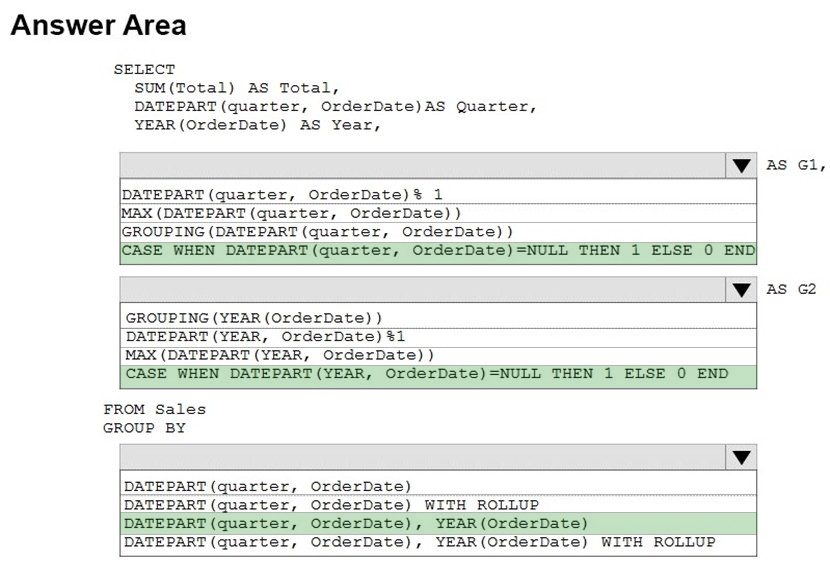

HOTSPOT -
You create a table to store sales information for an online sales application by running the following Transact-SQL statement:
You have a historical report that summarizes the sales for each quarter and year. The query that generated the data for the report is no longer available. A representative report contains the following data:
You need to recreate the query for the report.
How should you complete the Transact-SQL statement? To answer, select the appropriate Transact-SQL segments in the answer area.
NOTE: Each correct selection is worth one point.
Hot Area:

Dieter
Highly Voted 5 years, 10 months agomlourinho
5 years, 7 months agoPrides
5 years, 4 months agoMarcusJB
5 years, 3 months agoTheDUdeu
4 years, 9 months agoAnette
5 years agoAnette
5 years agoBabyBee
4 years, 7 months agochaoxes
4 years, 11 months agoVermonster
Most Recent 4 years, 5 months agoAndy7622
4 years, 6 months agoJiacheng
5 years, 4 months agoBabyBee
4 years, 7 months agoanonimdom
5 years, 5 months agoMarcusJB
5 years, 3 months ago